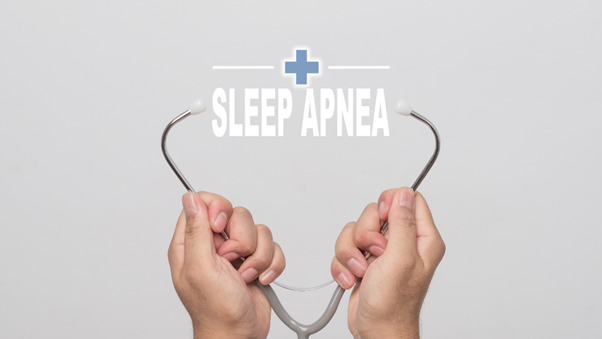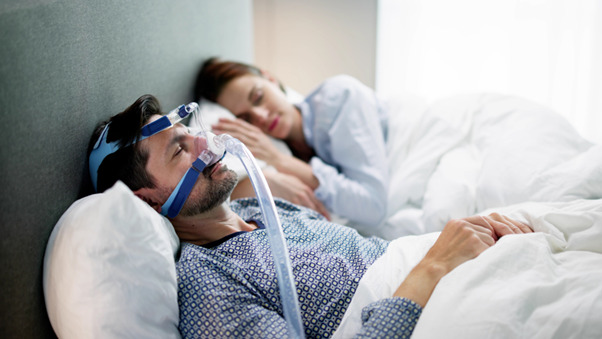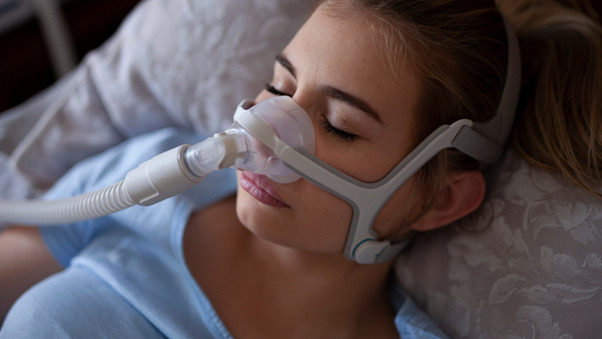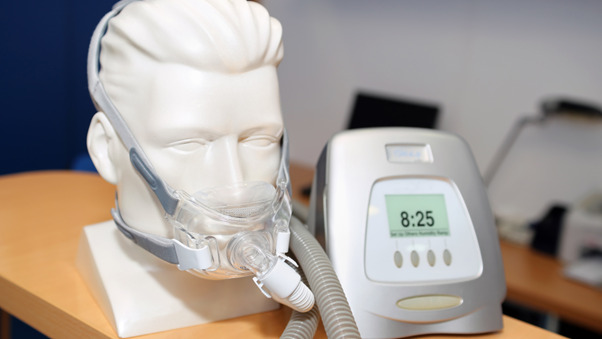
Sleep apnea is a significant sleep disorder characterized by repeated interruptions in breathing throughout the night. There are two main types: Central Sleep Apnea (CSA), where the brain doesn’t send proper signals to the muscles controlling breathing and Obstructive Sleep Apnea (OSA), which occurs when the throat muscles intermittently relax and block the airway, Both forms can lead to severe health issues if untreated, including an increased risk of heart attack, stroke, and high blood pressure.
Treating sleep apnea is crucial. Left unchecked, it can result in daytime fatigue, impaired cognitive function, and a higher risk of accidents. While Continuous Positive Airway Pressure (CPAP) therapy and lifestyle changes are often the first line of treatment, these non-invasive methods aren’t always effective for everyone.
For those who cannot tolerate CPAP or whose condition doesn’t improve with other treatments, surgery may be a viable option. Surgical procedures can address specific anatomical issues causing sleep apnea, offering a tailored approach to treatment when other methods fall short.
Pre-Surgical Evaluation
Purpose of Evaluation
A thorough pre-surgical evaluation is essential to tailor the best surgical approach for treating sleep apnea. This process helps pinpoint the exact cause of airway obstruction, ensuring that the chosen surgery directly addresses the issue, increasing the likelihood of a successful outcome.
Common Evaluation Methods
Nasopharyngoscopy:
This procedure involves inserting a flexible scope through the nose to examine the airway for blockages. It allows the doctor to identify potential problem areas in the nasal passages and throat that might contribute to sleep apnea.
Sleep Endoscopy:
Conducted while the patient is asleep, sleep endoscopy uses a scope to observe how the airway behaves during sleep. This method is particularly useful for identifying dynamic obstructions that occur only during sleep.
Imaging Techniques:
CT scans, MRIs, and X-rays provide detailed images of the airway structures. These imaging tools help visualize any anatomical abnormalities, such as enlarged tonsils or deviated septums, that could be contributing to sleep apnea.
Surgery Options for Obstructive Sleep Apnea (OSA)

Uvulopalatopharyngoplasty (UPPP)
Procedure Overview:
UPPP involves removing or shrinking the uvula, tonsils, and soft palate to widen the airway. This surgery is one of the most common for treating OSA, particularly when the soft palate is contributing to airway blockage.
Effectiveness and Risks:
UPPP has a success rate of 60% to 70%, but potential risks include post-surgical pain and the possibility of sleep apnea returning. Laser-assisted UPPP (LAUP) is less recommended due to concerns about long-term effectiveness and potential complications.
Tonsillectomy
Indications:
Tonsillectomy is particularly effective for adults with OSA who have enlarged tonsils. It’s also a standard treatment for children with OSA.
Success Rates:
Studies show that over 85% of adults with OSA experience significant symptom reduction after a tonsillectomy, with 57% achieving complete resolution.
Tracheotomy
Procedure Description:
A tracheotomy involves creating a direct airway by inserting a tube into the windpipe through a hole in the neck, bypassing the obstructed upper airway.
Usage:
This invasive procedure is reserved for severe cases of OSA, where other treatments have failed, or when the patient’s life is at risk.
Maxillomandibular Advancement
How it Works:
This surgery moves the upper and lower jaw forward, increasing the space in the upper airway and reducing obstructions near the tongue and soft palate.
Success Rates and Considerations:
With a success rate of nearly 86%, this surgery is highly effective but may alter facial appearance, making it a significant consideration for patients.
Tongue-Related Surgeries
Genioglossus Advancement:
This surgery moves the tongue muscle forward, preventing it from blocking the airway during sleep, with success rates ranging from 39% to 78%.
Midline Glossectomy:
By reducing the size of the tongue base, this procedure helps to open the airway, often in combination with other surgeries.
Hyoid Suspension:
This surgery adjusts the hyoid bone, moving it forward to help open the airway. It’s often used in conjunction with other OSA surgeries.
Surgery Options for Central Sleep Apnea (CSA)
Hypoglossal Nerve Stimulation (HNS)
Procedure Overview:
HNS involves implanting a small device that stimulates the hypoglossal nerve, which controls tongue movements. The stimulation keeps the airway open by moving the tongue forward during sleep, reducing obstructions and promoting better airflow.
Success Rates:
Studies show that HNS is effective in over 80% of cases, significantly reducing sleep apnea symptoms. Many patients prefer this treatment to CPAP therapy due to its ease of use and positive outcomes.
Transvenous Phrenic Nerve Stimulation (PNS)
Procedure Description:
PNS works by stimulating the phrenic nerve, which is responsible for controlling the diaphragm’s movement. This stimulation helps regulate breathing patterns during sleep, addressing the central issue in CSA.
Effectiveness:
Research indicates that PNS reduces the number of breathing lapses and improves overall sleep quality. Patients also report better mental health and less daytime fatigue, making it a valuable option for managing CSA.
Nasal Surgeries
Types of Nasal Blockages Addressed
Rhinoplasty:
Rhinoplasty is a surgical procedure that reshapes the nose to correct structural issues that may contribute to breathing difficulties, potentially easing symptoms of sleep apnea.
Septoplasty:
Septoplasty involves straightening the septum, the cartilage and bone dividing the nostrils. A deviated septum can block airflow, so this surgery helps to improve breathing efficiency.
Endoscopic Sinus Surgery:
This procedure removes obstructive tissue to enhance sinus drainage, which can alleviate chronic congestion and improve overall airflow through the nasal passages.
Nasal Valve Surgery:
Nasal valve surgery aims to keep the narrowest part of the nasal passage open, making breathing easier, particularly during sleep.
Turbinate Surgery:
This surgery reduces the size of turbinates, bony structures in the nose, to clear obstructions and improve airflow.
Effectiveness and Limitations
Nasal surgeries can significantly enhance sleep quality by improving nasal airflow and reducing snoring. However, they may not always decrease the number of apnea events, making them more effective as complementary treatments rather than standalone solutions for sleep apnea.
Weight Loss Surgeries
Link Between Obesity and OSA
Obesity is a major risk factor for Obstructive Sleep Apnea (OSA) because excess weight can lead to fat deposits around the upper airway, which obstruct breathing during sleep. Weight loss can reduce these obstructions, thereby decreasing the severity of OSA symptoms.
Types of Weight Loss Surgeries
Gastric Bypass and Gastric Band Surgery:
Gastric bypass involves rerouting the digestive system to a smaller stomach pouch, while gastric band surgery places a band around the stomach to reduce its size. Both procedures aim to limit food intake and promote significant weight loss.
Impact on OSA
Weight loss from these surgeries can greatly improve OSA by reducing the physical obstructions in the airway. However, while it often lessens the severity of symptoms, it may not completely cure sleep apnea, especially if other factors contribute to the condition.
Considerations Before Surgery
Risks and Benefits
Before opting for sleep apnea surgery, it’s crucial to weigh the potential risks against the benefits. While surgery can offer significant relief, it comes with risks such as infection, pain, and the possibility of the condition returning over time. Understanding these factors helps in making an informed decision.
Patient-Specific Factors
An individual’s anatomy, age, and weight play a vital role in determining the most suitable surgical option. For example, certain surgeries may be more effective for younger patients or those with specific anatomical issues, while others may carry higher risks for those with additional health concerns.
Questions to Ask Your Doctor
Before proceeding with surgery, patients should ask key questions such as: What are the success rates of this surgery? What are the potential complications? How will the surgery impact my daily life? Understanding these details is essential for setting realistic expectations and making an informed choice.
Conclusion
In summary, several surgical options are available for treating sleep apnea, ranging from Uvulopalatopharyngoplasty (UPPP) and tonsillectomy to more complex procedures like maxillomandibular advancement and nerve stimulation surgeries. Each option is tailored to address specific anatomical issues and varies in effectiveness based on the individual’s condition.
It’s essential to consult with your doctor to determine the most appropriate sleep apnea surgery for your unique situation. Surgery can be a life-changing treatment, but it’s important to understand the potential risks and benefits.
This information is intended for educational purposes only and should not replace professional medical advice. Always discuss treatment options thoroughly with your healthcare provider.
More Information:
…





